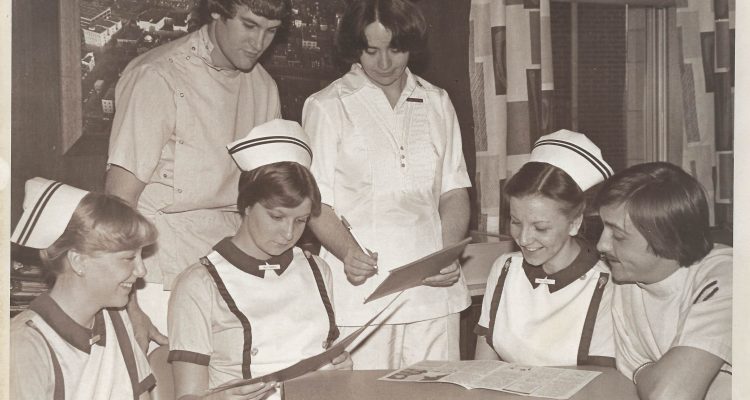Picture yourself walking through the heart of any city. What catches your eye? It’s not just the towering buildings or iconic monuments, but the stories they hold and the people who bring them to life. Such a place was found in the former Ohio Valley Medical Center (OVMC) – a place where the dedication of nurses, the expertise of physicians, and the unwavering commitment of staff reigned supreme. These remarkable individuals weren’t just part of the scenery—they were the very essence of this community, weaving compassion and care into the fabric of Wheeling’s soul.
At its peak, OVMC was a bustling 650-bed hospital in downtown Wheeling and began its storied history as City Hospital. The hospital was founded on January 1, 1890, largely due to the efforts of Wheeling women’s groups, particularly those from St. Matthew’s Episcopal Church. These women aimed to provide essential healthcare services to the community and succeeded in establishing the hospital in the former Wheeling Female Seminary. By 1892, City Hospital opened its doors to patients and a school of nursing, marking the beginning of a legacy that would span more than a century.
From its inception until 1911, City Hospital was operated exclusively by women – a testament to the determination and resilience of the women’s groups that spearheaded its creation. The work carried out during this period would lay the groundwork for what would become a central healthcare institution in the Friendly City.
A New Beginning: Ohio Valley General Hospital
By 1911, the original 60-bed building was deteriorating beyond repair and required more work than many would consider it worth. Ultimately, it was deemed unsafe and subsequently razed the following year. Unlike many other hospitals that received government and state funding, Ohio Valley General did not. Instead, it relied on a successful 11-day fundraising campaign that raised $188,000 in private funds. This effort brought together not only everyday citizens but also prominent Wheeling families, including the Stiefels, Holloways, Wilsons, and Franzheims, among many others. Their collective support enabled the construction of a new 154-bed health center designed by architect Edward F. Stevens.
On January 14, 1914, the East Building of the new hospital complex opened under the newly minted name Ohio Valley General Hospital. This new facility not only expanded its capacity but also enhanced its ability to serve the community. During this same period, generous benefactors would sponsor rooms to ensure that less fortunate residents received necessary care and would continue to do so in the years to come.
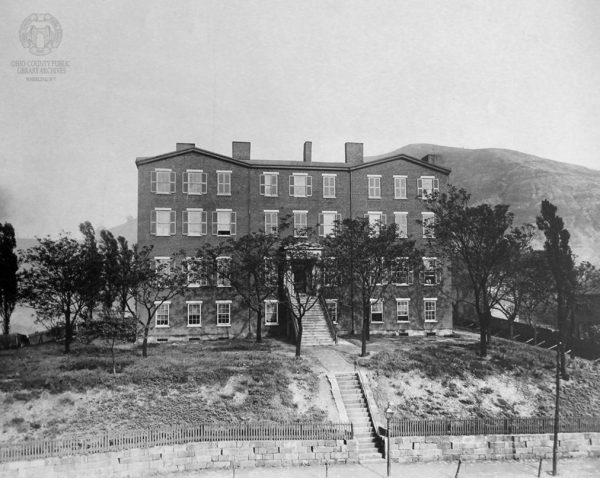
Nursing Education: A Legacy of Excellence
In conjunction with the hospital’s opening in 1892, the City Hospital Training School for Nurses became the first nursing school in West Virginia. By 1894, the first two nurses graduated from the program and were the first of many to come. The nursing school became an integral part of the hospital, producing generations of nurses over its nearly 100-year history. In 1926, a new residence to house nursing students was built to accommodate the growing number of students. By the time the school closed in 1988, it had trained approximately 2,500 nurses, many of whom went on to have distinguished careers in the fields of nursing, education, and industry.
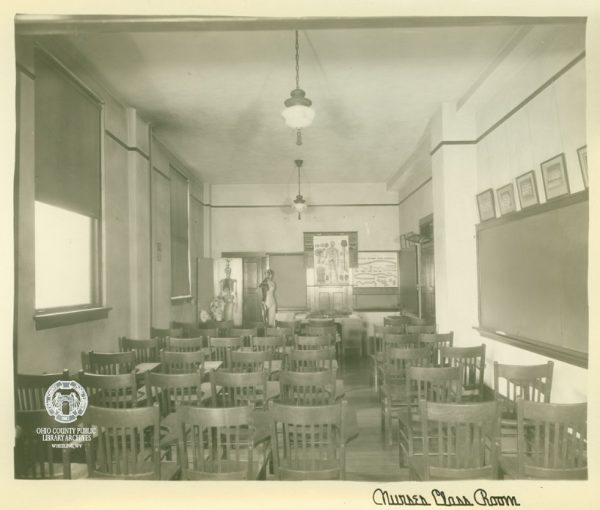
Expansion and Modernization: Ohio Valley Medical Center
On January 26, 1973, the hospital’s board of trustees opted to rename the institution Ohio Valley Medical Center to better represent its growing services and wider regional reach. The most notable expansion took place in April 1976 with the construction of an eight-story patient tower, intended to replace the 200 beds of the East Building. This new West Building, which opened on April 27, 1980, provided larger rooms, more privacy, and advanced technology to accommodate the changing landscape of medical care. Despite these upgrades, the older parts of the hospital remained in use for administrative offices, doctors’ offices, and testing facilities.
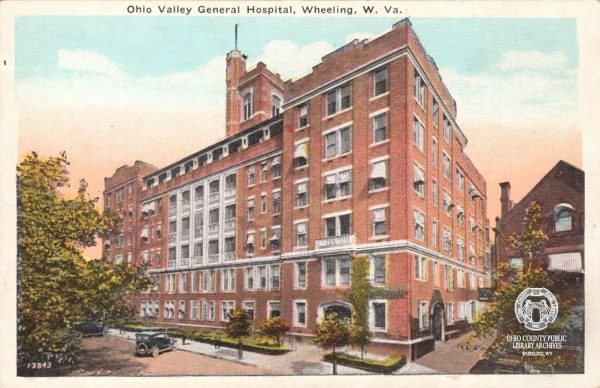
Memories and Reflections
The memories of two former OVMC nurses, Mary McKinley and Betty Jo Sproull, are a sterling reminder of the hospital’s rich history and its impact on the community. Mary, with 47 years of nursing experience, and Betty Jo, with 45 years, both graduated from the hospital’s renowned nursing school and dedicated much of their careers to OVMC.
Mary reflected on the hospital’s profound influence, saying, “This place made a difference… the people who worked there made a difference.” Betty Jo added, “You grew up there in many ways,” underscoring the personal and professional growth they experienced within the hospital’s walls.
When reflecting on how nursing has evolved since their early days, both Mary and Betty Jo shared vivid memories of strict rules and routines. “As students, we had to be back by 8:30 p.m.,” Mary recalled. “We had ‘house mothers’ throughout our three-year nursing program. In our second year, we earned a bit more freedom and could stay out until 10:30 p.m. By our final year, we had until 11:55 p.m., but any later and we’d find the doors locked.”
Betty Jo emphasized the strict dress code, saying, “We were required to wear dresses even after school hours. On duty, we donned our student nursing uniforms, complete with hats and 401 clinic shoes that had to be polished and kept bright white. It was all about maintaining a professional appearance at all times.”
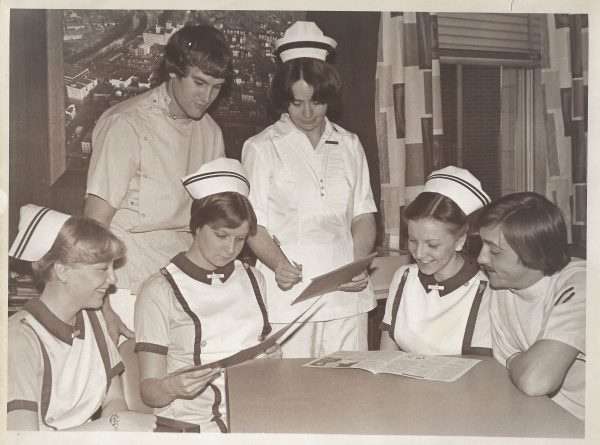
A Hub of Medical Innovation and Legacy of Excellence
OVMC was known for its high standards and innovative medical practices. In 1979, a team of medical professionals at the hospital successfully reattached a patient’s arm, an achievement that garnered national attention. Such groundbreaking procedures showcased the hospital’s commitment to advancing medical care.
The reputation of OVMC’s nursing school extended far beyond Wheeling. Graduates often advanced to prestigious roles nationwide. One graduate became the Dean of the University of Central Florida’s nursing school, while others held significant positions in various medical institutions. Even today, Betty Jo continues to contribute to the nursing profession by teaching clinicals at Franciscan University.
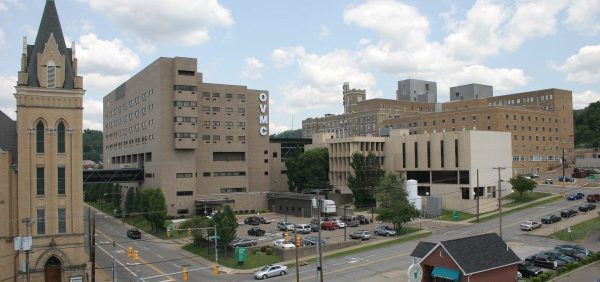
The Final Chapter: Closure and Demolition
Once a cornerstone of the community, OVMC stood tall as one of the region’s leading employers, offering a comprehensive range of healthcare services. However, winds of change swept through its corridors, driven by evolving regulations and a shifting healthcare landscape that some would claim prioritized profits and insurance margins over patient well-being.
In 2017, Ohio Valley Health Services and Education Corporation, the parent company of OVMC, fell under the acquisition of the Alecto Corporation. Hopes were high that this move would inject new life into the institution. However, the final decision came in September 2019 when Alecto announced the closure of OVMC, marking the end of an illustrious 125-year journey of service to the community it once proudly served.
For Betty Jo, the closure was particularly poignant as she worked the final shift at the hospital where her career began. The closure also resulted in the loss of employment for 600-800 staff members, marking a somber moment in Wheeling’s history.
Following OVMC’s closure, the city of Wheeling took ownership of the hospital and surrounding property with plans to redevelop the site. WVU Medicine leased the site and announced intentions to construct a new, state-of-the-art regional cancer center. This development meant the demolition of the existing hospital structures, which began earlier this year.
Wheeling Mayor Glenn Elliott expressed optimism about the new project in the Wheeling Intelligencer, stating, “When it became clear that the existing buildings were not feasible for this purpose, the City of Wheeling and the Ohio County Commission stepped up to provide the bulk of the funding for demolition. Fortunately, we were able to find in WVU Medicine a trusted third party willing to invest tens of millions of dollars in a state-of-the-art new cancer treatment facility on the site of this campus.”
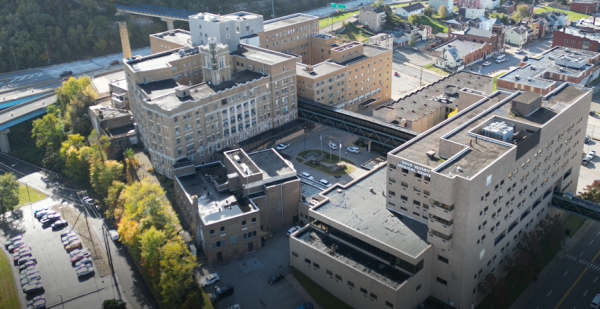
Preserving the Past: Honoring the Legacy
Mary McKinley and Betty Jo Sproull, along with community and former staff members, sought ways to honor OVMC’s legacy. With encouragement from former Wheeling Hospital CEO Sam Nazarro, they established the Ohio Valley General Hospital History Group. The committee aims to preserve documents and artifacts salvaged from the hospital campus for future generations.
Among the items set for preservation are the OVGH letters from the hospital’s turret, installed in 1953 at a cost of $2,100 and nearly six feet tall. On April 27, 2024, the committee hosted a time capsule opening ceremony at St. Matthew’s Episcopal Church, revealing the contents of capsules from the 1912 and 1980 buildings to over 350 attendees.
As the Ohio Valley General Hospital History Group continues its work, their immediate goals include preserving the time capsule contents, installing the OVGH letters on the new police headquarters, and curating historical documents and pictures tied to the hospital’s past. Mary noted, “It’s a journey for Betty Jo and me to identify and find out who the people are in these pictures and documents and tell their story.”
To support these efforts, the group invites and welcomes donations from those who share their passion for preserving the legacy of OVGH and OVMC. The organization has established a fund managed by the Community Foundation of the Ohio Valley under the name of the OVGH/OVMC Preservation Project. Contributions to the fund are 100% tax-deductible and will provide needed support in safeguarding the stories, artifacts, and memories of the community landmark.
As we reflect on the rich history of Ohio Valley General Hospital and Ohio Valley Medical Center, it is impossible not to honor the countless generations of nurses, physicians, and staff who dedicated their lives to caring for the community. Their unwavering commitment to patient care created a legacy that touched the lives of countless individuals and families throughout the Ohio Valley.
Mary and Betty Jo, with their decades of service, truly embody the spirit of this beloved institution. Their stories, like those of many others who walked the hospital’s halls, are a testament to the professionalism, compassion, and dedication that defined OVGH/OVMC.
On a personal note, it’s a connection that runs deep, knowing that my twin brother and I took our first breaths at OVMC 35 years ago, the sons of a remarkable registered nurse, and under the care of an outstanding team of medical professionals. Growing up, I witnessed firsthand the sacrifices made by my mother, like all nurses – the late nights, the missed family gatherings, and the emergency callouts, always answering with unwavering dedication.
Your commitment to the well-being of our region has been nothing short of heroic. You’ve stood as beacons of hope, tirelessly working to heal and comfort those in need. From the bustling halls of OVMC, you’ve touched countless lives, stitching together the fabric of our tight-knit city and valley with compassion and expertise.
Your legacy is not just one of medical excellence but of genuine care and compassion that transcends mere treatment. It’s the late-night bedside chats, the reassuring smiles, and the tender gestures that make all the difference to those in your care. Your impact stretches far beyond the walls of this hospital, shaping the very essence of Wheeling and the Ohio Valley.
As we bid farewell to OVMC, know that your legacy will endure, a guiding light for future generations of healthcare professionals. Your tireless dedication has made our valley a safer and healthier place to live. On behalf of countless numbers of people – for everything you’ve done, and for the many lives you’ve touched, I offer my deepest gratitude.


